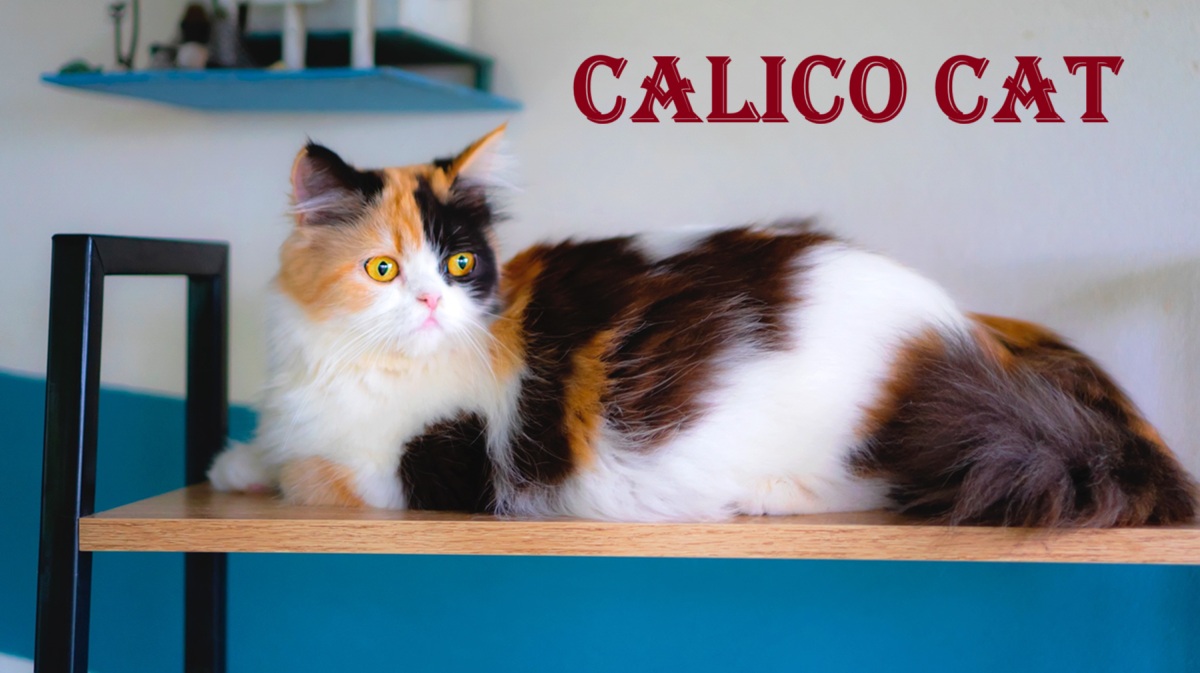Calico cat are one of the most beloved types of cats worldwide. Recognizable by their unique tri-color coats, these cats are more than just beautiful—they carry an interesting genetic story, have vibrant personalities, and require specific care to thrive.
Many people confuse calico cats with a breed, but “calico” refers to the coat pattern, not a breed. This pattern typically consists of white, black, and orange patches, which can appear in various combinations.
In this guide, we will explore:
- The history and origins of calico cats
- Genetic factors behind their coat colors
- Typical physical and personality traits
- Health considerations
- Grooming, diet, and care tips
- Cultural significance
- Tips for adopting a calico cat
Origins and Genetics of Calico Cats
Historical Background
Calico cats are believed to have roots in ancient Egypt, where domestic cats first appeared. Over centuries, the calico pattern spread across Europe, especially through trade routes in the Mediterranean. Merchants often brought these cats aboard ships, where they were valued for rodent control and admired for their beauty.
Today, calico cats are found all over the world, often in shelters and homes, admired as both pets and symbols of good luck.
Genetic Factors
The calico pattern is a result of complex genetics rather than a breed trait.
- X Chromosome Linkage: The orange and black colors are linked to the X chromosome. Females have two X chromosomes, which allows them to display both colors simultaneously, resulting in the calico pattern.
- Male Calicos: Males have only one X chromosome, so calico males are extremely rare. When they do exist, it’s often due to Klinefelter’s Syndrome (XXY chromosomes) or chimerism, and these males are often sterile.
- Color Variations: The three main colors—white, orange, and black—can appear in different shades, creating classic calico, dilute calico, and caliby patterns.
Physical Appearance
Coat Colors and Patterns
Calico cats are instantly recognizable due to their distinctive coat pattern.
- Classic Calico: Bold patches of black, orange, and white.
- Dilute Calico: Softer, pastel-like shades of gray, cream, and white.
- Caliby: A mix of calico and tabby stripes, combining patches and stripes.
Size and Lifespan
Calico cats can vary in size depending on their breed background:
- Small to Medium Breed Cats: Typically weigh between 7–12 pounds.
- Lifespan: With proper care, calico cats live 12–16 years, though some can live longer.
Personality Traits
Calico cats are famous for their “calico attitude”, which is often described as bold and independent. While personalities differ from cat to cat, some common traits include:
- Affectionate: Many calicos enjoy cuddling and spending time with their humans.
- Independent: They often like exploring on their own and may resist constant handling.
- Playful: They enjoy interactive toys, climbing, and chasing games.
- Vocal: Some calicos are talkative and expressive, communicating their feelings clearly.
Health Considerations
Genetic Health Issues
While most calicos are healthy, rare male calicos may face genetic challenges:
- Klinefelter’s Syndrome (XXY males): Can result in sterility and some health complications.
- Chimerism: Fusion of two embryos may create genetic variations with minor health concerns.
General Health Tips
Regardless of gender, all calico cats benefit from:
- Routine Vet Visits: For vaccinations, parasite prevention, and health checks.
- Balanced Diet: High-quality cat food suitable for their age and health.
- Exercise and Enrichment: Toys, climbing trees, and interactive play help maintain mental and physical health.
Grooming and Care
Coat Maintenance
- Short-Haired Calicos: Weekly brushing is enough to remove loose hair and prevent tangles.
- Long-Haired Calicos: Daily grooming prevents mats and keeps fur shiny.
General Care Tips
- Diet: Protein-rich diet with necessary vitamins and minerals.
- Exercise: Daily interactive play keeps them fit and happy.
- Health Monitoring: Watch for dental issues, obesity, or abnormal behaviors.
Cultural Significance
Calico cats are often considered lucky cats in different cultures:
- Japan: Maneki-neko figurines are modeled after calicos and symbolize good fortune.
- Germany: Known as Glückskatze, meaning lucky cat.
- United States: Believed to bring financial prosperity and happiness.
Quick Facts Table
| Trait | Detail |
|---|---|
| Coat Colors | White, orange, black (or diluted versions) |
| Pattern Types | Classic calico, dilute calico, caliby |
| Gender Ratio | ~99.9% female, ~0.1% male |
| Lifespan | 12–16 years (varies by breed) |
| Personality Traits | Affectionate, independent, playful, vocal |
| Health Risks | Klinefelter’s Syndrome, chimerism (rare in males) |
| Origin | Ancient Egypt, spread via Mediterranean trade |
| Cultural Significance | Symbols of luck in Japan, Germany, USA |
Adopting a Calico Cat
When adopting a calico cat, consider the following:
- Research: Understand their coat pattern, typical personality, and health considerations.
- Visit Shelters: Many calicos are waiting for homes.
- Home Preparation: Provide scratching posts, toys, and a safe environment.
Adopting a calico is rewarding, as they bring a colorful personality and unique charm into any home.
Conclusion
Calico cat are a perfect blend of beauty, personality, and history. Their unique tri-color coats, genetic story, and playful temperament make them a beloved companion. By understanding their care requirements and health needs, owners can ensure their calico lives a long, healthy, and happy life.
Whether you are a first-time cat owner or an experienced cat lover, calico cats offer a colorful addition to your family and a rich cultural legacy that spans centuries.
Read More: Pure Beagle Dog Price 2025 – Cost, Buying Tips, and Care Guide
Disclaimer
The information provided in this article is for educational and informational purposes only. It does not replace professional veterinary advice. Always consult a licensed veterinarian for questions about your cat’s health, behavior, or care. The author is not responsible for any outcomes based on this content.





